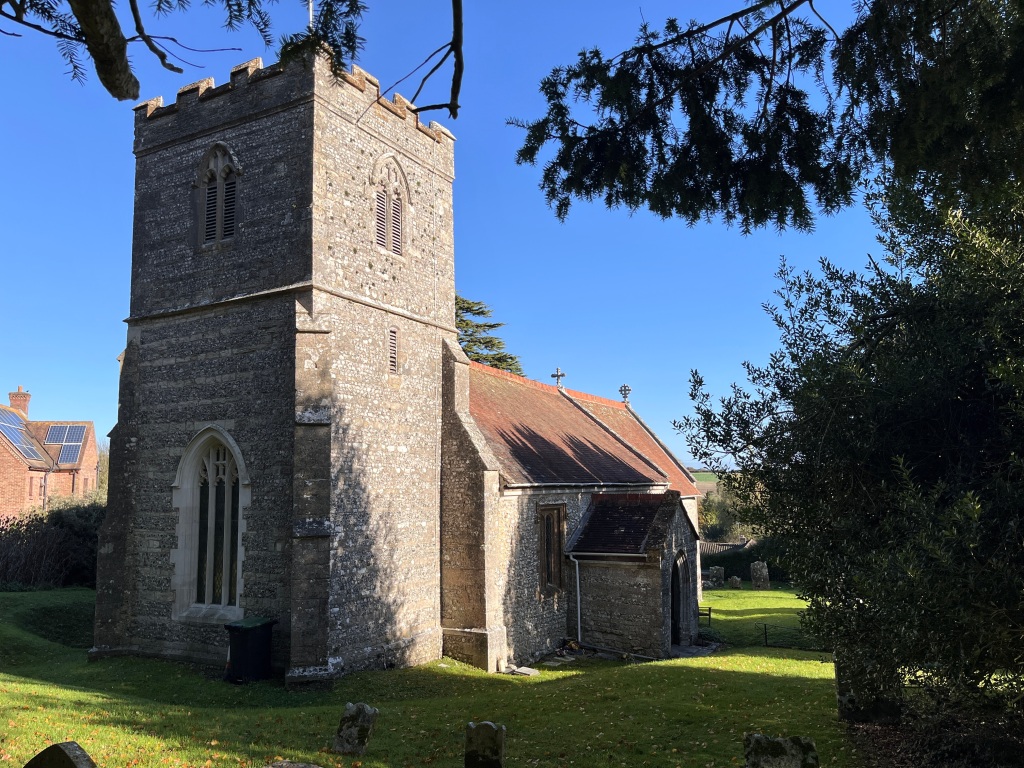
ST ANDREW . MILBORNE ST ANDREW . DORSET
GRADE II* † C12 origins; tower & S porch C15; chancel, vestry, south aisle and chapel c1876 (G E Street). Wonderful C12 inner door with chevrons, shielded by porch; C12 font with a story to tell (below). A charming and very Dorset church. 4m SE of Bere Regis; 10m NE of Dorchester. 50.7759 / -2.2833 / SY801974
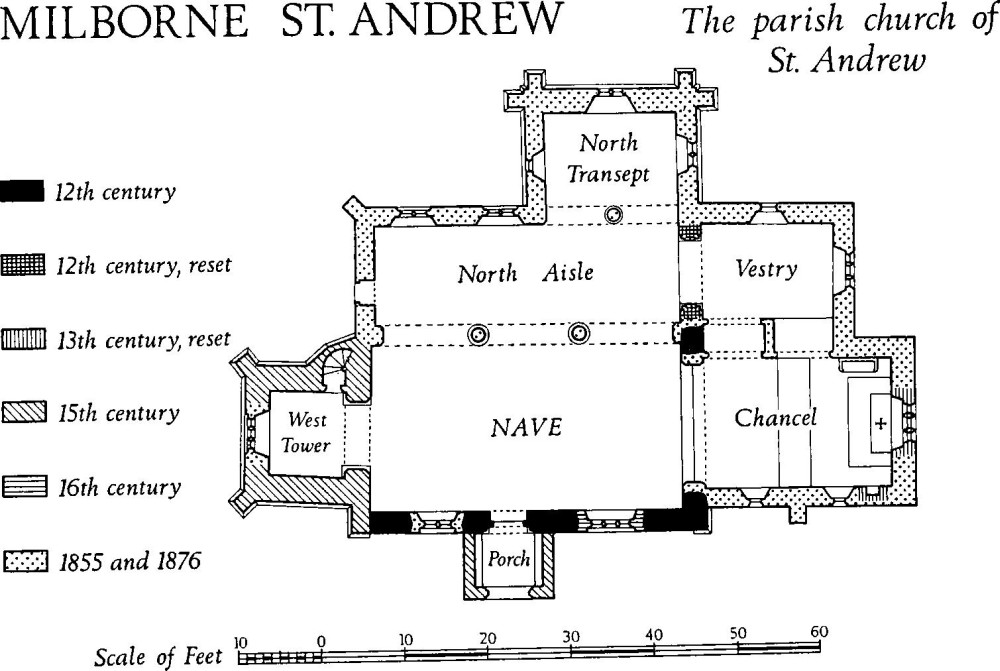
DIALS
St Andrew has 3 dials. Dial 1 is a true scratch dial located in the NE corner of the nave, as is Dial 2 on the stone below (largely obscured by lichen, easy to overlook). Dial 3 is a transitional dial above the porch entrance.
DIAL 1
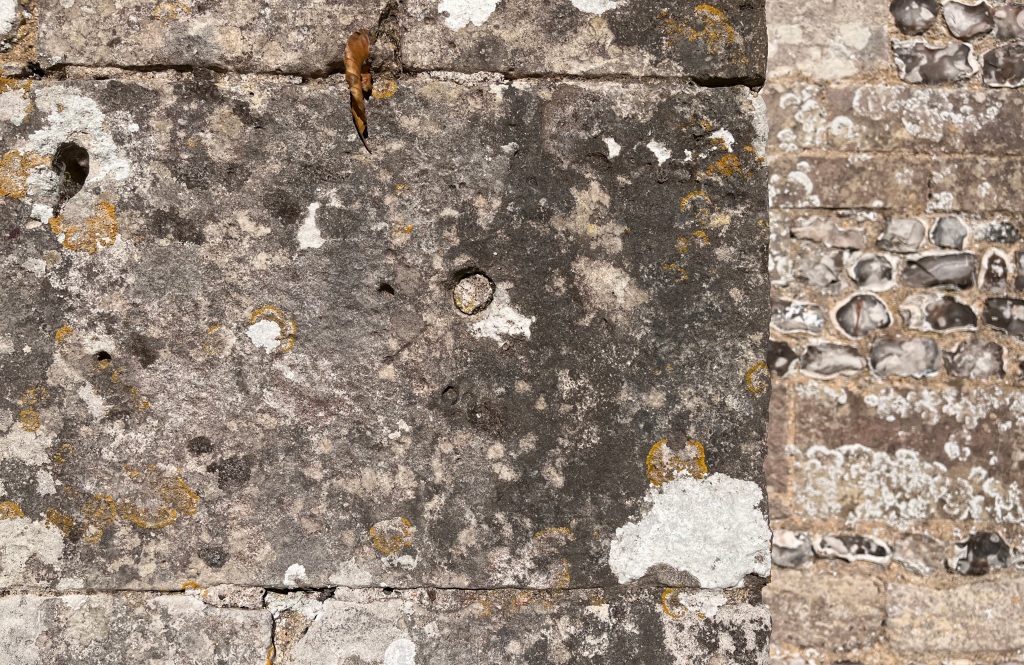
Dial 1 is easily identified by its prominent filled gnomon hole from which 3 lines radiate in LLQ. There is also a perimeter curve of 5 (?6) pocks (diag).
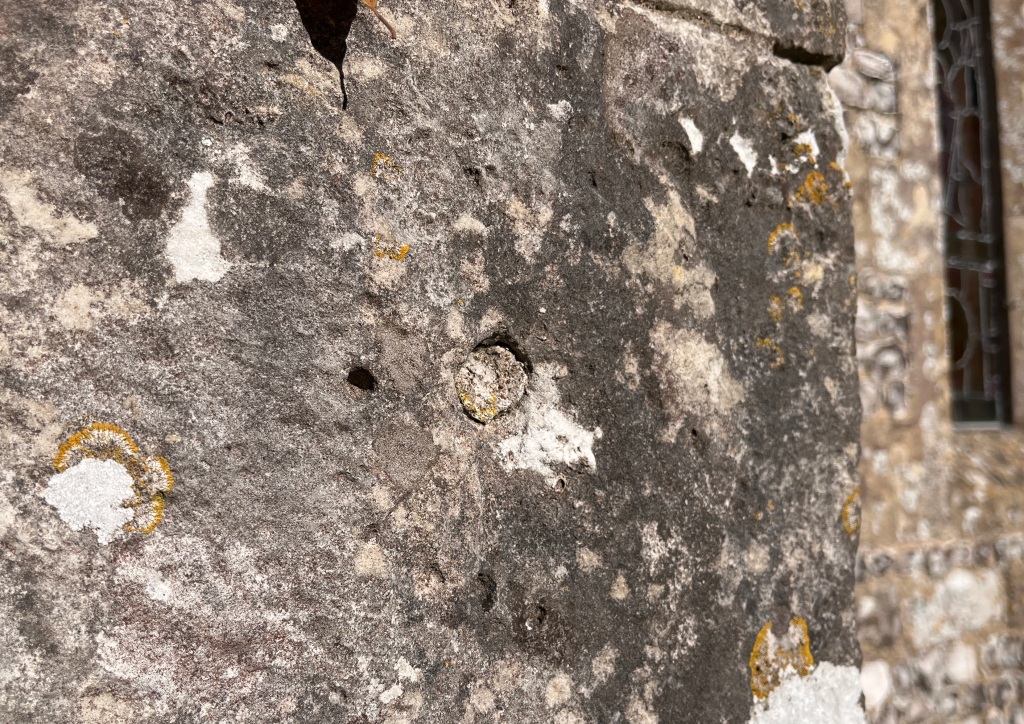

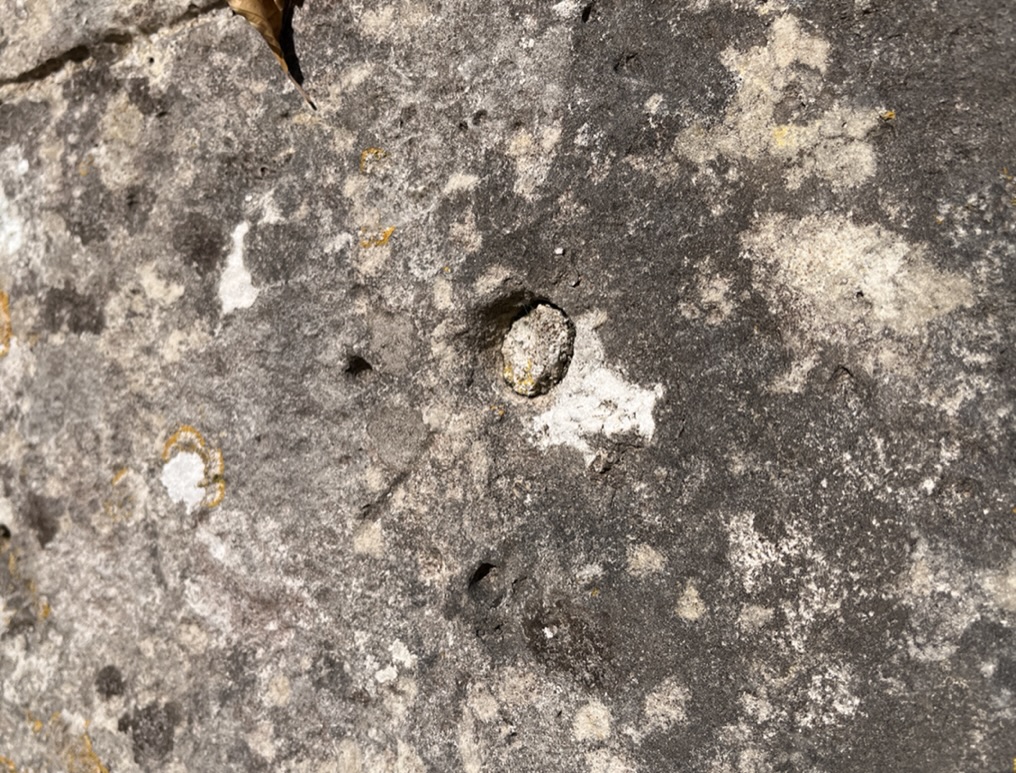

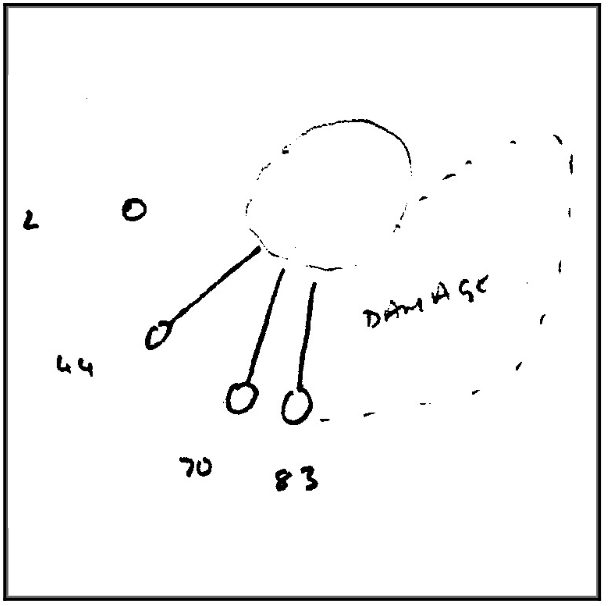
DIAL 2
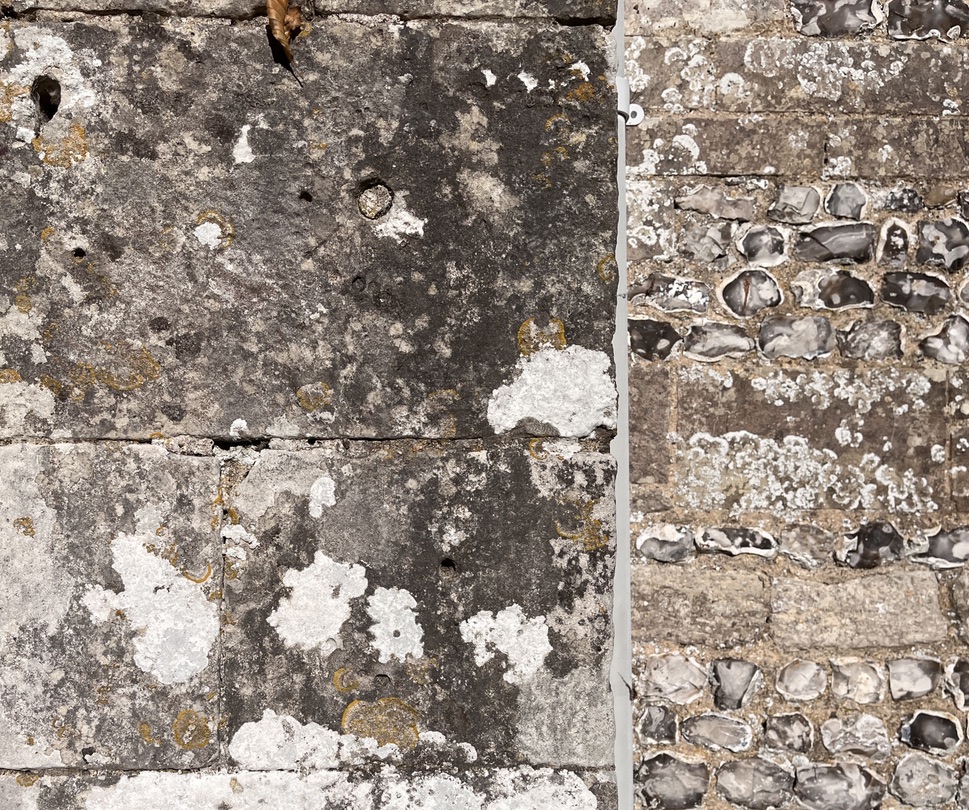
Dial 2, on the stone immediately below Dial, 1 has no discernible lines. BSS records 5 pocks of varying size that are (given the lichen) more or less visible seen in conjunction with the BSS diagram below. They are basically shallow dents, in contrast to the ‘drilled hole’ type of pock usually encountered.
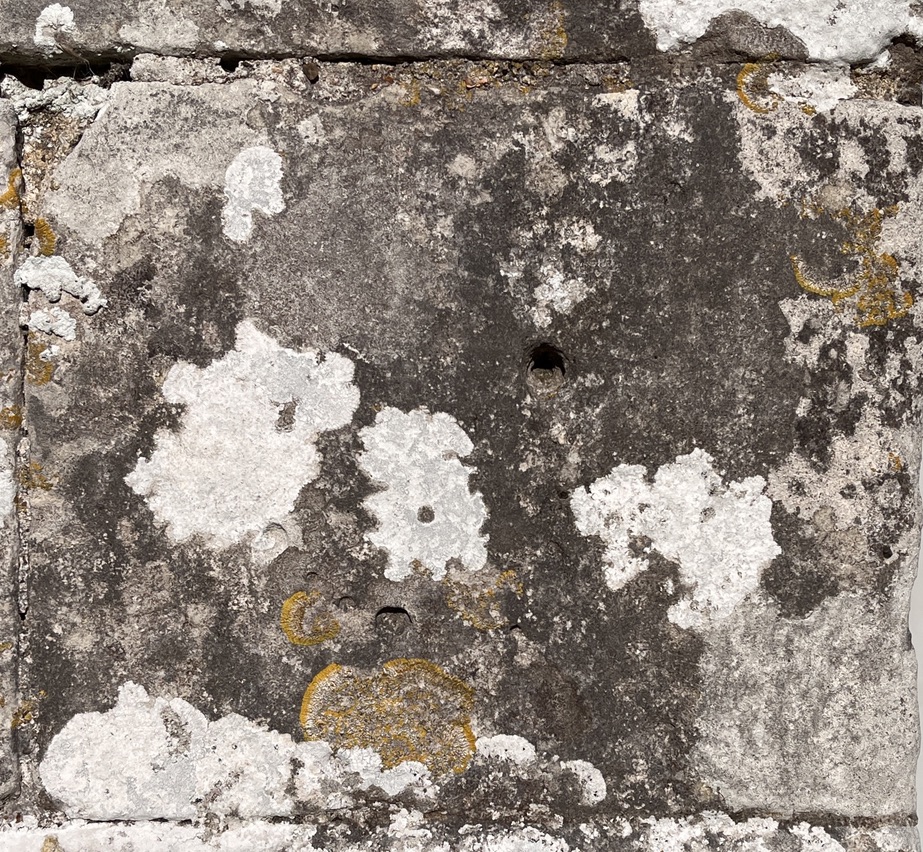
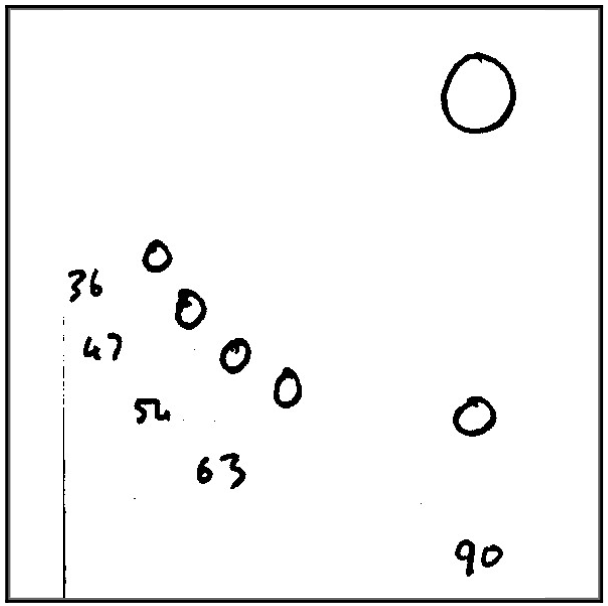
DIAL 3
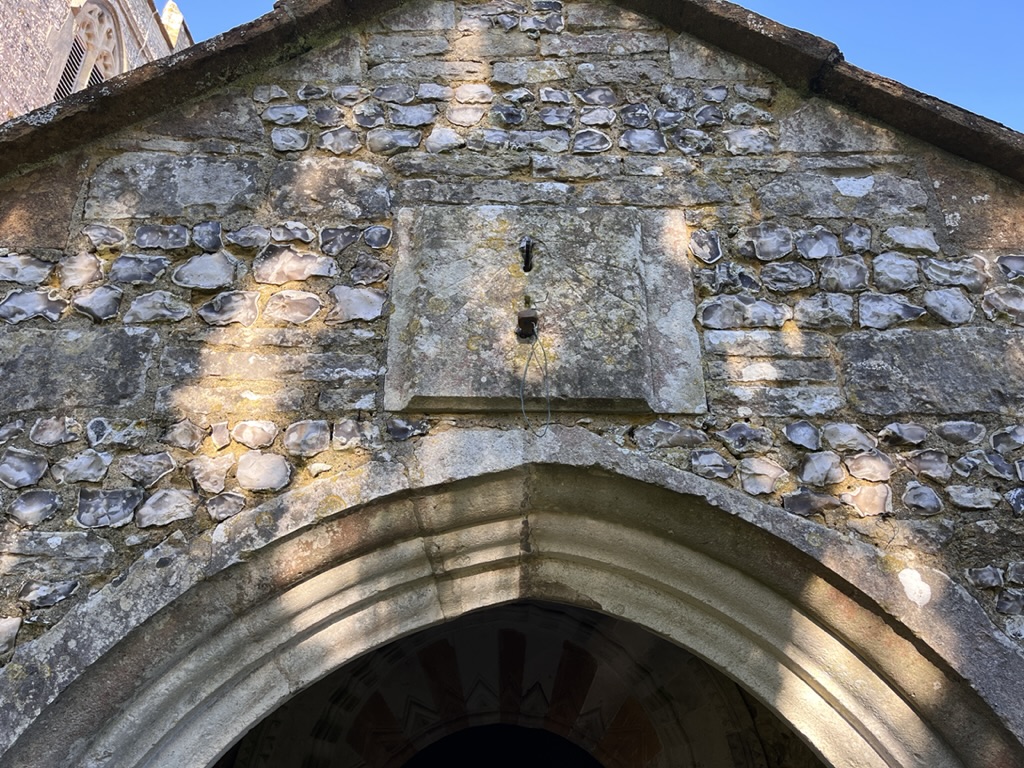
A transitional dial above the archway of the C15 S porch. Accuracy in marking the passage of time became increasingly important, not least with the advent of clocks. Dial design and construction involved taking a scientific approach to making time-telling more reliable and more legible. St Andrew is a good example. Rather than being scratched directly onto a stone intrinsic to the church structure, this dial stone is on what BHO describes as a square raised panel.
The dial has slightly angled edges with ‘extensions’ on both sides. It is not canted, so probably faces due S. It is a six-to-six dial with – originally – 12 lines (14, with the horizontal as 2). The hours 4 & 5 are cut deeper, perhaps denoting the most important Mass of the day. Some lines have weathered away in part or completely. There are a number of pocks. The recorder noted 4 trace (semi-)circles, one being close to the gnomon hole. The original gnomon was in the upper hole where there is now a square stub of iron rod. The lower arrangement indicates, I think, a later conversion / updating from a simple rod gnomon to a ‘proper’ one that required a footing; and perhaps a lamp bracket.
RARE FEATURE It’s not completely clear from my rather poor iPhone photos, but if you look carefully at the edge R side where there is the wide margin, you can see that the lines marking 4 & 5 extend onto the side of the dial face and continue down the side of the stone panel. Those short lines are visible from the side even if the rest of the dial is not. I wouldn’t have paid it much attention had I not also visited the neighbouring village of Winterbourne Whitchurch where there is an emphatic example of a ‘side-dial’ complete with a most unusual gnomon. My understanding is that this arrangement amounts to a morning dial read from E.


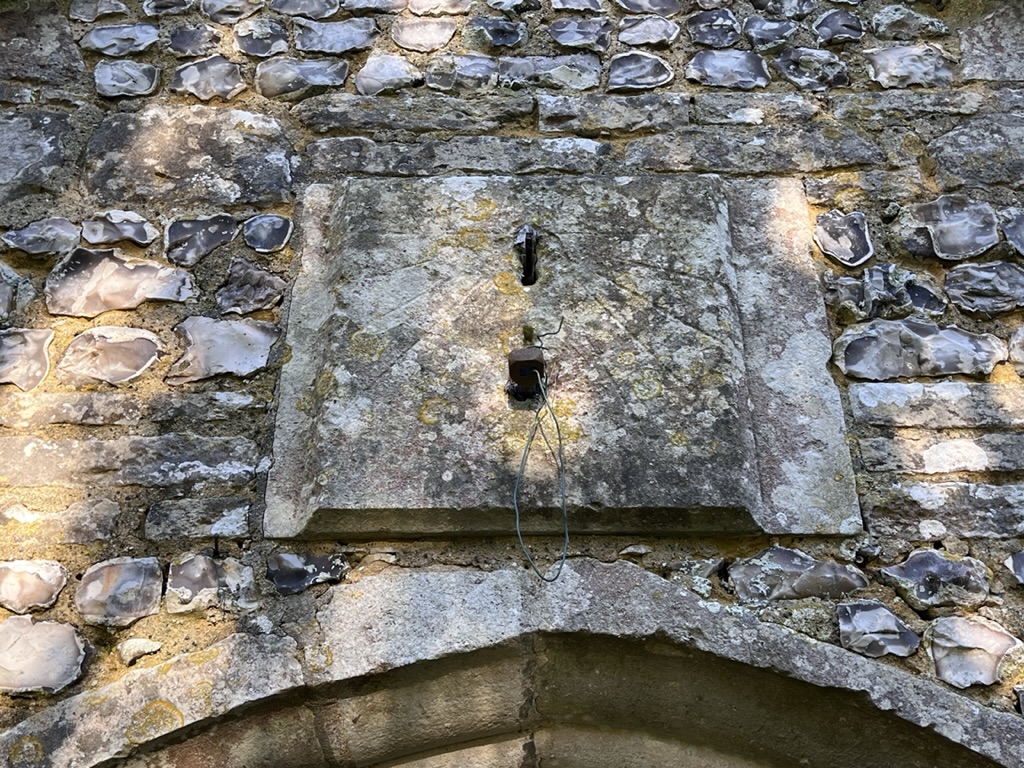
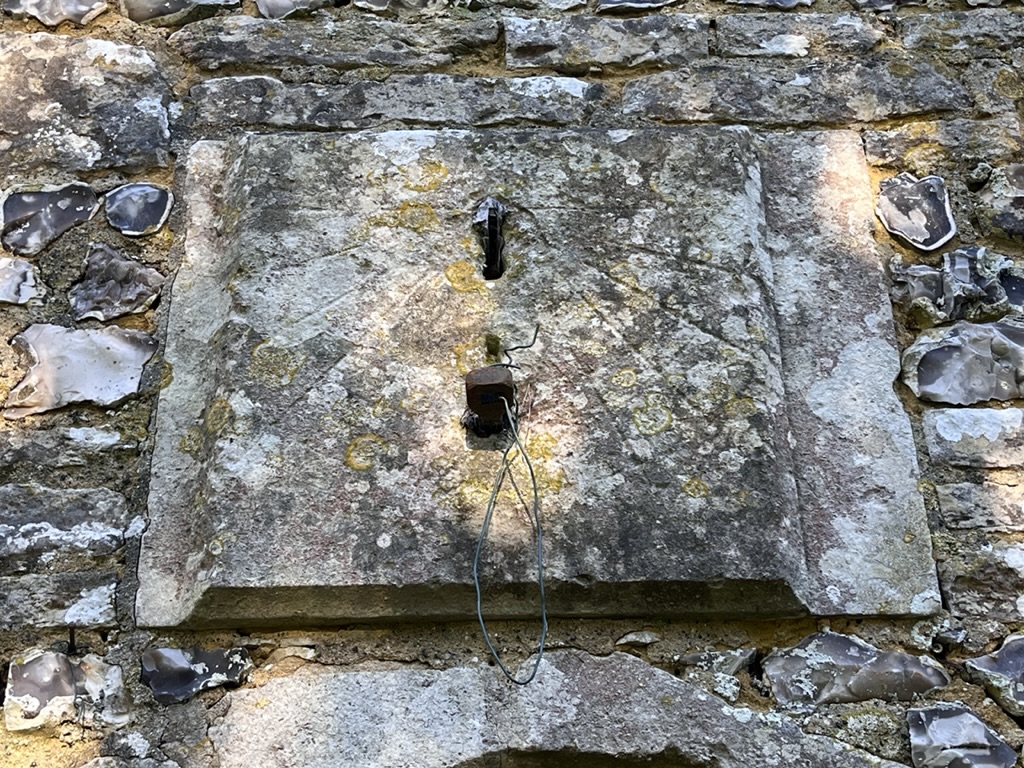

This is the 4th church I have come across where church events have entailed the use of a dial to tie in decorations etc with wire. In each case the wire was effective as an improvised gnomon.
FONT STORY
During the Victorian period it was sometimes the fashion to throw out ancient fonts and Street did just that, installing in its place a new replacement. Fortunately, the old Norman font, decorated with a cable motif, was rediscovered in 1930 and put back in the north aisle, where it remains in use to this day. DHCT [This is an example of throwing the bath out with the baby water]

GSS Category: Scratch Dial; Mass Dial ; Transitional Dial
All photos: Keith Salvesen
